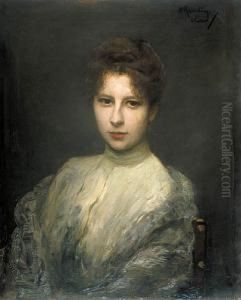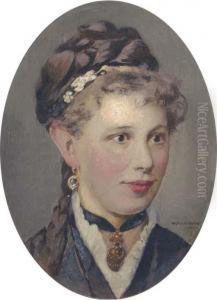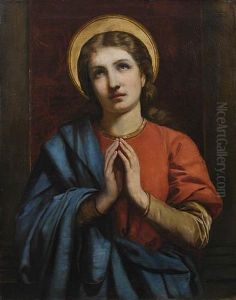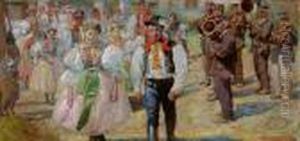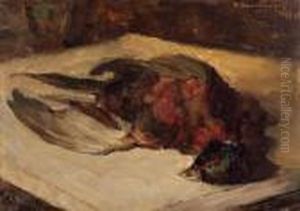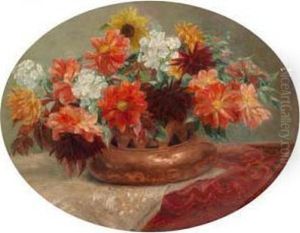Henryk Heinrich Rauchinger / Paintings
Henryk Heinrich Rauchinger was a Polish artist whose career spanned the late 19th and early 20th centuries, a period marked by significant social, political, and artistic changes in Europe. Born on December 19, 1858, in Kraków, which was then part of the Austro-Hungarian Empire, Rauchinger was exposed to a rich cultural heritage that would profoundly influence his artistic development. He embarked on his artistic journey at the Kraków School of Fine Arts, where he honed his skills and developed a keen interest in portrait painting and genre scenes.
Rauchinger's talent and ambition led him to further his studies abroad, a common practice among artists of his time seeking to expand their horizons. He studied in Munich, a hub for artists and intellectuals, and later spent time in Paris, immersing himself in the vibrant artistic scene of the French capital. These experiences enriched Rauchinger's artistic language, incorporating elements of realism and impressionism, which were dominant movements in European art during his formative years.
Throughout his career, Rauchinger exhibited a profound ability to capture the essence of his subjects, earning him recognition and commissions from a diverse clientele that included the aristocracy and prominent social figures. His portraits are particularly noted for their psychological depth and the skillful use of light and shadow, characteristics that made his work highly sought after. Beyond portraiture, Rauchinger also explored historical and allegorical themes, reflecting the broader cultural and political concerns of his time.
The early 20th century was a period of turmoil in Europe, with the outbreak of World War I and the subsequent political upheavals that reshaped the continent. These events influenced Rauchinger's work, infusing it with a sense of introspection and sometimes melancholy, reflective of the broader existential questions that pervaded European society.
Rauchinger's contribution to art was recognized in his lifetime through numerous exhibitions and awards. However, like many artists of his era, his work has been somewhat overshadowed by the avant-garde movements that dominated the early 20th century. Despite this, his art remains an important testament to the rich cultural landscape of turn-of-the-century Europe, offering insights into the social and historical context of the time.
Henryk Heinrich Rauchinger passed away on December 14, 1942, in a world that had changed dramatically since his birth. His legacy, preserved in galleries and private collections, continues to be appreciated for its artistic merit and historical significance, offering a window into the soul of an era marked by both beauty and upheaval.
